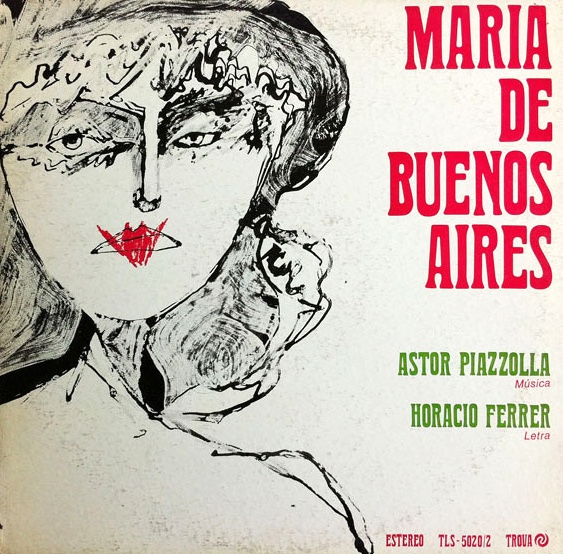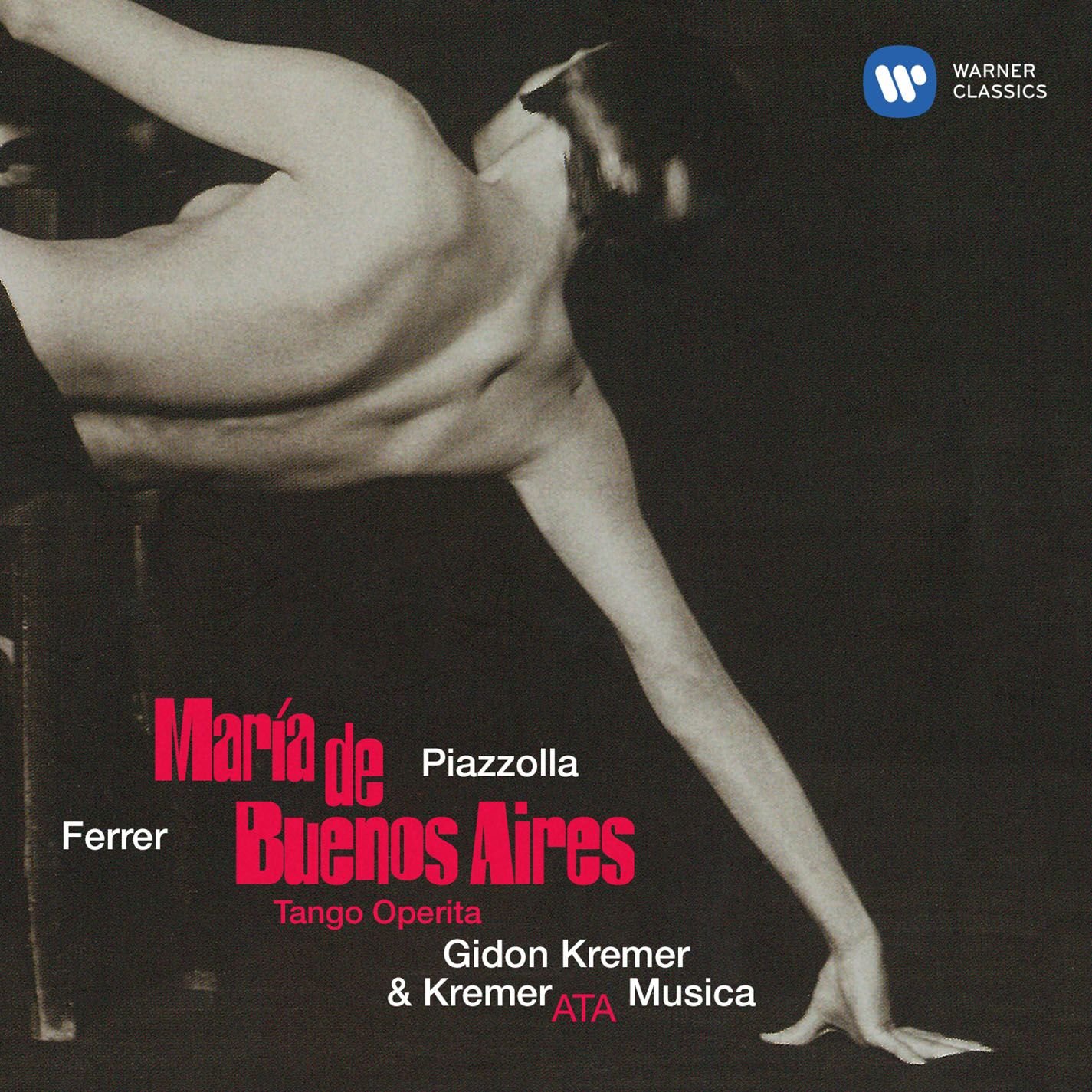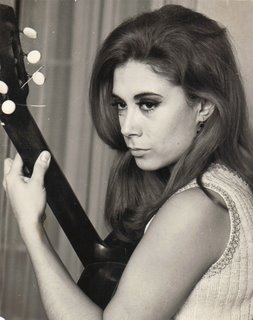Borges – Music: Piazzolla “María de Buenos Aires”
- At September 02, 2018
- By Great Quail
- In Borges
 0
0
María de Buenos Aires
(1968)
For narrator, two singers, and tango orchestra
- Alevare
- Teme de María (“Theme of María”)
- Balada renga para un organito loco (“Lame Ballad for a Crazy Hurdy-Gurdy”)
- Yo soy María (“I Am María”)
- Milonga Carrieguera por María la niña (“Carpieran Milonga for the Child María”)
- Fuga y misterioso (“Fugue and Mystery”)
- Poema valseado (“Waltzed-Poem”)
- Tocata rea (“Accusation Toccata”)
- Miserere Canyengue de los landrates antiguos en las alcantarillas (“Canyengue Miserere of the Old Gutter Thieves”)
- Contramilonga a la funerala por la primera muerte de María (“Funeral Countermilonga for the First Death of María”)
- Tangata del alba (“Tangata as Dawn”)
- Carta a los árboles y las chimeneas (“A Letter to the Trees and Chimneys”)
- Aria de los analistas (“Aria of the Analysts”)
- Romanza de duende poeta y curda (“Romanza of the Drunken Poet Duende”)
- Allegro tangabile
- Milonga de la anunciación (“Milonga of the Annunciation”)
- Tangus Dei
Astor Piazzolla’s great “tango operita,” this surreal work is a collaboration between Piazzolla and his long-time friend and creative partner, the Uruguayan-Argentine poet Horacio Ferrer (1933–2014). Although not directly inspired by Borges, its themes are decidedly reminiscent of Borges’ early work, and the libretto is written in lunfardo, the dialect Borges famously attempted to capture in Fervor de Buenos Aires. Definitely among Piazzolla’s stranger pieces, María de Buenos Aires is an eclectic brew of musical styles, an even more ambitious extension of the ideas pioneered in El tango. The story of a prostitute who becomes impregnated by the spirit of duende, the opera is a gleeful mix of the scared and the profane. The plot of María was conceived by Piazzolla’s current mistress, the Argentine actress, singer, and dancer Egle Martin (1936–2022). A friend of Dizzy Gillespie’s, Martin was a celebrated “vedette” of the Buenos Aires sixties.
Slated to play the original María, Martin’s breakup with Piazzolla ended their creative partnership—her husband refused to let her divorce him for Piazzolla! In any event, Pizzolla soon found a new María in the tango singer Amelita Baltar, and the tango operita was back on track. It was first performed at the Sala Planeta on 8 May 1968, and recorded that same year for Trova Industrias Musicales, with Astor Piazzolla playing the bandoneón and Horacio Ferrer narrating the role of El Duende. The first U.S. performance was by the Houston Grand Opera in 1991.
Maybe one day I’ll write a full review of María de Buenos Aires for this page; but until then here’s the amazing summary from Wikipedia:
The ill-omened María, born “one day when God was drunk” in a poor suburb of Buenos Aires, heads to the center of Buenos Aires, where she is seduced by the music of the tango and becomes a sex worker. Thieves and brothel keepers, gathered at a black mass, resolve her death. After her death, she is condemned to a hell, which is the city itself: her Shadow, now walks the city. She has returned to virginity, is impregnated by the word of the goblin poet, and—witnessed by three Construction Worker Magi and The Women Who Knead Pasta—gives birth to a Child María, who may be herself. The characters include María (and, after her death, the Shadow of María), a singer of payadas; various members of the Buenos Aires underworld; a payador who functions as a poet and narrator; a goblin-like duende; several marionettes under the control of the duende; a circus of psychoanalysts; pasta makers; and construction workers.
If this synopsis doesn’t make you run out and listen to this album, I’m not sure I can help you.
Recordings
There are over a dozen recordings of María de Buenos Aires, from Piazzolla’s original 1968 LP to modern transcriptions for solo guitar. A few examples of full productions include those directed by Victor Vallena, Murry Sidlin, Vittorio Antonellini, Marcelo Nisinman, Christopher Sprenger, the Ensemble Triade, Jacopo Rivani, the Ensemble Musiques Nouvelles, and the Zvezdoliki Ensemble. This page only profiles my two favorites—the original album and the 1998 Gidon Kremer recording.

María de Buenos Aires (1968)
Musicians: Astor Piazzolla y su orquesta
Narrator: Horacio Ferrer
Singers: Amelita Baltar, Hector de Rosas
LP: Trova TLS-5020 (1968)
CD: Trova JWCD 5003/4 (1990)
Purchase: Digital [Amazon Part 1 & Part 2]
Online: YouTube [Continuous Stream] | Garden of Forking Paths [Dropbox MP3s]
This is the original 1968 recording, narrated by Horatio Ferrer and featuring Astor Piazzolla on bandoneón. It was first released in Argentina on Trova as a 2-LP gatefold album, and has gone through numerous pressings, the first compact disc appearing in 1990. Further CD versions included a 2005 reissue by La Nacion that split the work into two volumes, an irritating tradition that was continued by Trova, and still makes it difficult to find a pair of matched discs! Because the album has been essentially deleted, the Garden of Forking Paths has placed the MP3s in a convenient Dropbox for visitors to enjoy. Hopefully one day the original recording will be remastered and released as a full set.

María de Buenos Aires (1998)
Musicians: Gidon Kremer & Kremer ATA Musica
Narrator: Horacio Ferrer
Singers: Julia Zenko, Jairo
CD: Teldec 3984-20632-2 (1998)
Purchase: CD [Amazon], Digital [Presto Music]
Online: YouTube [Album Playlist]
The most celebrated modern recording of María de Buenos Aires is this 1998 version by Teldec, featuring Gidon Kremer and his Kremer Musica, the original librettist Horace Ferrer, and Jairo, whose voice graced the magnificent album Borges & Piazzolla. Although I haven’t heard every available María de Buenos Aires, Kremer has a long history of interpreting Piazzolla, and this version is a worthy update to the original. It also has the sexiest cover—not an insignificant consideration for this risqué opera!
Online Video
María Excerpt
Miran Vaupotic & The Zagreb Soloists and Chamber Choir
An excerpt from a production of María de Buenos Aires recorded in Zagreb-Croatia on 22 October 2011. Interestingly, tango is actually quite popular in Eastern Europe.
María de Buenos Aires
Universidad de Antioquia: Musica Facultad de Artes
A full production of María, produced in 2013 by the Departamento de Musica Facultad de Artes at Colombia’s Universidad de Antioquia.
María de Buenos Aires [Part 1] [Part 2]
Brown Opera Production
A full production of María directed by Alejandro Jose Garcia Morales. Recorded on 14 March 2015 in Alumnae Hall, Brown University. It’s a little tame, and the sound quality is muffled, but it has its moments!
 Additional Information
Additional Information
María de Buenos Aires Wikipedia Page
Wikipedia hosts a fairly detailed page on Piazzolla’s bizarre tango operita.
Astor Piazzolla’s Borges-Related Works
Astor Piazzolla Main Page
Return to the Garden of Forking Path’s Astor Piazzolla profile.
El tango (1965)
Piazzolla set some of Borges’ poems and milongas to music on the album El tango.
A intrusa (1979)
Piazzolla’s score to A intrusa, a homoerotic Brazilian movie directed by Carlos Hugo Christensen and loosely based on Borges’ story “The Intruder.”
The Rough Dancer and the Cyclical Night (1987)
A cycle of fourteen pieces inspired by Borges’ poetry, this work was commissioned for the Hispanic American Arts Center’s production of Tango Apasionado.
Borges & Piazzolla (1996)
A modern remake of El tango, this exuberant album brings Borges’ mythical Buenos Aires to life through music, song, and narration.
Author: Allen B. Ruch
Last Modified: 7 August 2024
Borges Music Page: Borges and Music
Main Borges Page: The Garden of Forking Paths
Contact: quail(at)shipwrecklibrary(dot)com



